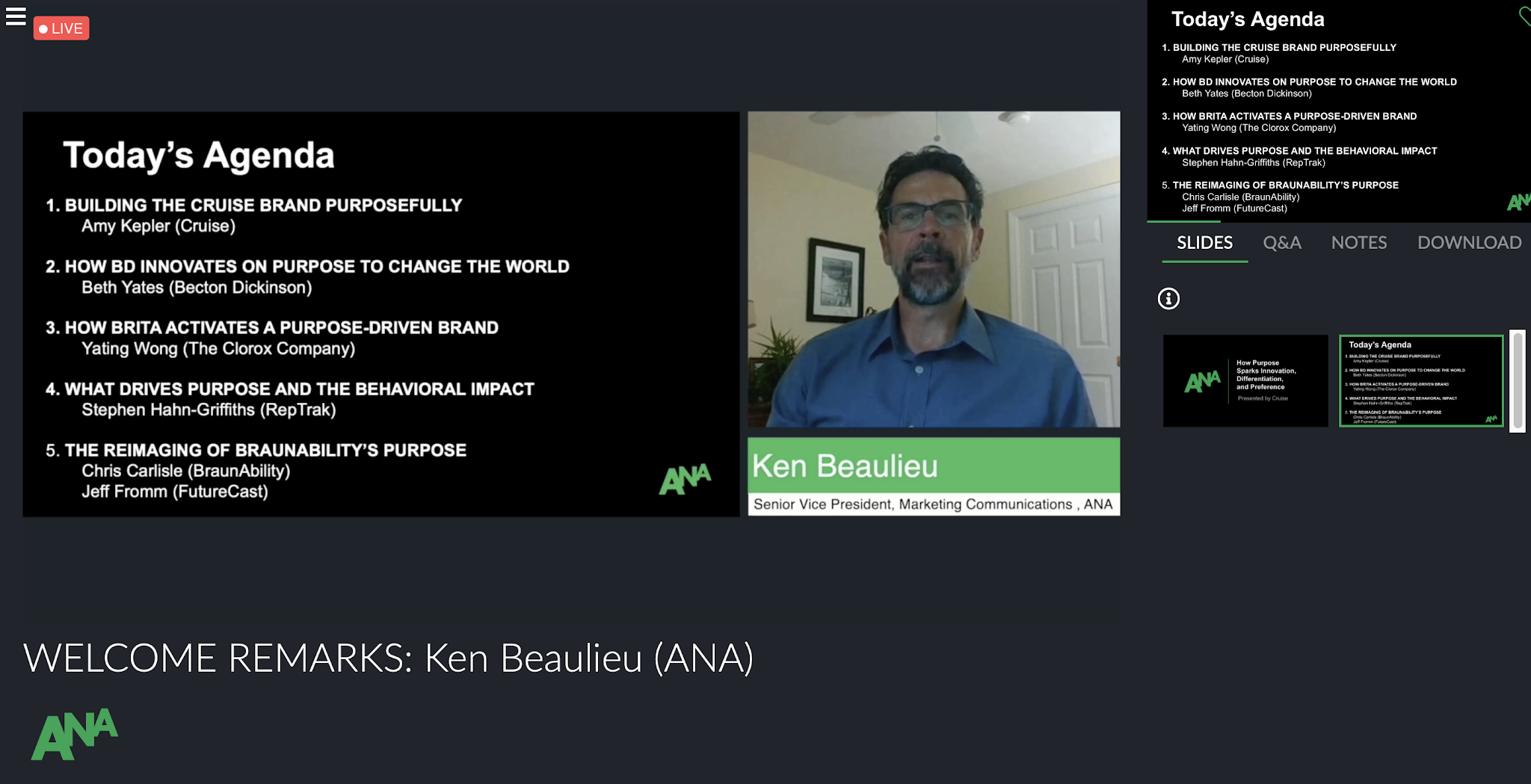Ad Week 2019 | Christina Kofron
Today, I had the pleasure of attending Day 3 of Advertising Week NYC 2019. Caught up in a whirlwind of advertising (shocking), tech, data, and you guessed it, people, I did not know where to look or what to do first. Luckily, I figured it out.
The first talk I attended was “Getting Ahead of the Data Curve.” Since I don’t have much to do with data or data mining on a day-to-day basis, this session was incredibly informative. It also appears that to big companies, I, as a millennial, have been pigeonholed into the demographic that is on the cusp of being “afraid” of companies’ data mining, while simultaneously understanding why they do it, and what they do with it. Truth be told, both assessments of myself are correct: I am equally intrigued, yet terrified of companies having my data. The reality is that there is no escaping data collection with the amount of technology in existence today, so we might as well understand how and why it’s being done.
What I learned is that companies love first-party data. Data enriches and powers everything that brands do. Third-party data allows companies to understand the customer, while second-party data bridges the gap between first- and third-party data. This big data enables a brand to create additional value for its consumers and round out the consumer experience.
A large part of this data analytics and mining is successful only if marketers understand the data and the appropriate questions to ask consumers so that the brand can get the answers they are looking for. Suzy Deering, Vice President and Chief Marketing Officer at eBay, North America, said,
Sometimes we get caught up in the one-to-one conversation, where I think our corporate responsibility is more about shared interest and how you make sure you’re connecting with your customers to make sure they’re part of a particular interest group which builds our credibility from a corporate standpoint.Corporate responsibility being brought into the conversation of data mining, shows that large corporations, and hopefully all brands, are thinking on a larger scale and how data sharing will better impact the customer and tailor the consumer experience to each person’s individual needs and tastes, rather than solely collecting consumer data to sell to another third-party.
Randall Rothenberg later added that,
Research shows that 80% of ads don’t work which is why there’s such a high volume of advertising.The average person is exposed to over 5,000 ads per day; this means that over 4000 of those ads did not lead the consumer to make a purchase or interact with a particular brand.
The second session that I attended was “Can a Brand Be Truly Inclusive.” As both a CUNY employee and CUNY student, diversity is at the foreground of my daily routine, and something that I am hyper-conscious and sensitive to. I believe that making both my workplace as well as the classroom as inclusive and diverse as possible leads not only to a better understanding of human nature, culture and ideas, but also empowers others to ensure their voices are heard, and gives them the confidence to be who they are, and comfortable in their own skin. With that said, I can think of no better person to give this talk than the absolutely astounding Laverne Cox.
Laverne is a pillar of strength in a world that, while more progressive than it has been in the past 50 years, is still not as accepting of others as it should be. As a black trans woman, she is an advocate for the LGBTQ+ community, and uses her unprecedented career to help make a difference in the lives of others. She is not only an absolute inspiration to the LGBTQ+ community, but to all. I was thrilled to hear her speak profoundly on issues of diversity and inclusion, and the work that must be done by brands to be authentic on issues of inclusivity and diversity. One issue is “rainbow washing”, which is a brand/company offering packaging, window displays, messaging, etc. during pride month for the benefit of jumping on the proverbial “bandwagon” to pretend to be inclusive. Today’s consumer is hyper-aware of false pretenses and lies in advertising. Pride is not a trend; and efforts are viewed as insincere if the brand does not foster inclusivity and diversity as brand values during every other month outside of pride month.
Smirnoff vodka (a Diageo brand) gives members of the LGBTQ+ community a reason to believe in their authentic diversity and inclusivity. Smirnoff launched a campaign featuring none other than Laverne Cox, and follows a model called PRIDE. PRIDE is an acronym for marketing for inclusivity and diversity meaning the following: P- Persistent marketing support throughout the year (not just for pride month); R- Represent the full community (including trans people); I- Invest meaningfully with significant financial support, D- Defend with policy advocacy; E- Empower people through a commitment to hire.
Laverne believes that part of the way to foster diverse work environments is by internship opportunities and training opportunities to build up folks who can rise up in a company in unprecedented ways. My favorite quote of the day was by Laverne who said,
Different is good ‘cause there’s not another you. You are the only ‘you’ on the planet. And that is a wonderful advantage if you can frame it that way.Advertising Week 2019 was a fantastic experience that I am fortunate to have been able to attend. Attendees like myself had a wonderful opportunity to engage with a multitude of industry leaders who are changing the way we see advertising, brands, and even ourselves.





